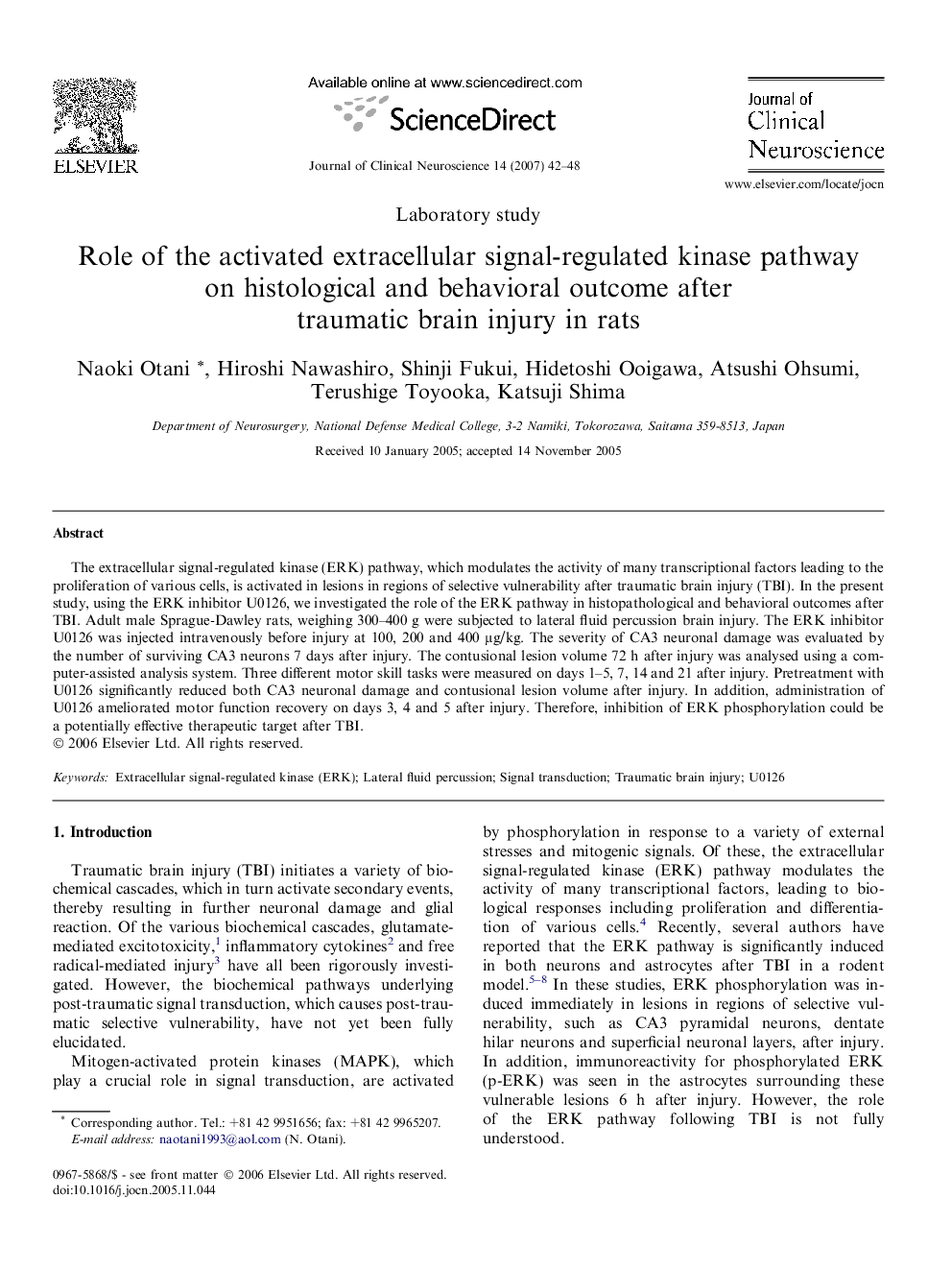| Article ID | Journal | Published Year | Pages | File Type |
|---|---|---|---|---|
| 3062968 | Journal of Clinical Neuroscience | 2007 | 7 Pages |
The extracellular signal-regulated kinase (ERK) pathway, which modulates the activity of many transcriptional factors leading to the proliferation of various cells, is activated in lesions in regions of selective vulnerability after traumatic brain injury (TBI). In the present study, using the ERK inhibitor U0126, we investigated the role of the ERK pathway in histopathological and behavioral outcomes after TBI. Adult male Sprague-Dawley rats, weighing 300–400 g were subjected to lateral fluid percussion brain injury. The ERK inhibitor U0126 was injected intravenously before injury at 100, 200 and 400 μg/kg. The severity of CA3 neuronal damage was evaluated by the number of surviving CA3 neurons 7 days after injury. The contusional lesion volume 72 h after injury was analysed using a computer-assisted analysis system. Three different motor skill tasks were measured on days 1–5, 7, 14 and 21 after injury. Pretreatment with U0126 significantly reduced both CA3 neuronal damage and contusional lesion volume after injury. In addition, administration of U0126 ameliorated motor function recovery on days 3, 4 and 5 after injury. Therefore, inhibition of ERK phosphorylation could be a potentially effective therapeutic target after TBI.
